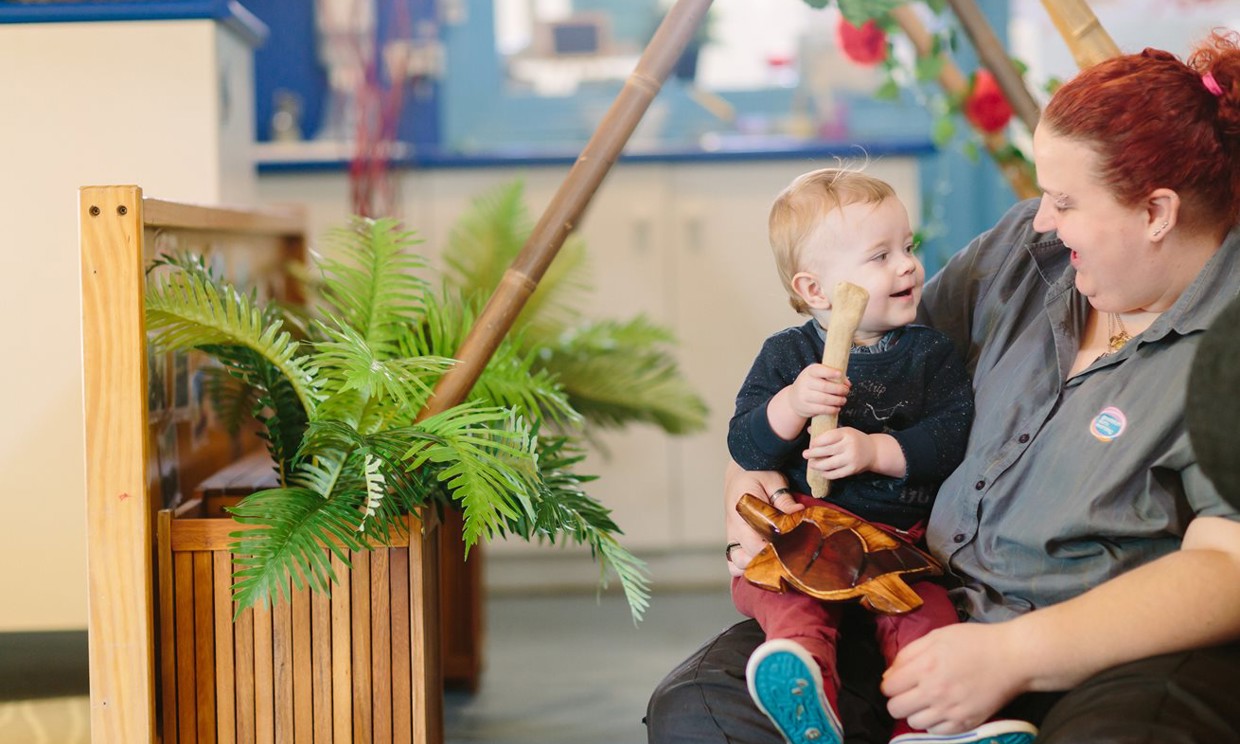Helping children recognise their own feelings can help them begin to empathise with other people’s feelings, says Goodstart Early Learning national manager professional practice Greg Antcliff.
Mr Antcliff said the ability to recognise and name your own emotions was critical in developing emotional competence.
And the good news for parents is that spending a little bit of extra time with your child naming their emotions could lead to fewer tantrums and a happier day.
“Children begin to understand labels for their own and other people's emotions when parents and educators talk to them about the feelings that other people express in a variety of situations,” Mr Antcliff said.
There are plenty of positive outcomes associated with naming emotions. Mr Antcliff said children could develop an increased ability to regulate their emotions, enjoy better friendships by enhancing their social skills, and enjoy a closer bond to their parent or educator.
“If educators and parents talk about each person's inner world of thoughts, feelings and perceptions, children can begin to understand that someone else might feel or think differently to term,” Mr Antcliff said.
“If a child can recognise their own feelings, they can begin to empathise with other people's feelings.”
Labelling emotions correctly can also help give the child a language to communicate how they were feeling, rather than acting out.
So, how do you encourage a child to name their emotions?
The first step is to encourage children to think about how they’re feeling by saying “It sounds like you are (angry, upset, happy). Is that right?” or “I can see by your face that you are . . . “
Naming feelings can encourage children to understand what they’re feeling and why they’re feeling like that.
“If a child does not know what to do when they are feeling in a certain way, parents and educators can suggest socially acceptable behaviour models for them to express the emotion.
“For example when you are feeling angry you can come to me and let me know but you cannot hit someone because you are frustrated. Naming the emotion then giving a behaviour model that sets them up for social success.”
Secondly, connect emotions to the feelings of others around them.
s and educators can talk to children about what they are feeling and what others are feeling and expressing throughout the day.
For example: “You are smiling, I think that you’re very happy with that toy “ and “Look at Sophie and Sarah. They’re laughing. I think they are happy playing together with the blocks.”
Thirdly, structure activities which encourage labelling emotions such as increasing conversations around how your child is feeling, act out different feelings, or create a poster with faces expressing different emotions and discuss them.
You could also create flash cards with different expressions such as anger, happiness, joy and disgust.
“These activities open up many opportunities for intentional teaching and purposeful planning to activate children’s emotional language and prosocial expression of emotions.” Mr Antcliff said.
Emotions by age groups
For children aged two to three years old: Children will begin to increase understanding and use of language related to emotions and will be beginning to label feelings she recognises in herself or others. For example, “Mummy is happy now”.
For children aged four to five: Children begin to label their own feelings and those of others based on facial expressions or tone of voice. For example, he or she might look at a picture in a book and say “that person looks sad”.
For school-aged children: Children begin to use more complex language to express their understanding of feelings and their causes. For example “I want to try riding that but I’m a bit scared”.
Acknowledgement for each Practice in Action Guide (PIAG) –
This PIAG was adapted with permission form the Parenting Research Centre and the Benevolent Society from The Benevolent Society’s Resilience Practice Framework: A framework to promote resilience in children and families, Guides, 1 – 6, 2015.
These educational resource guides are based on the original guides in PracticeWise Evidence-Based Services (PWEBS) database, drawn from child and family therapeutic intervention outcomes studies (PracticeWise, 2009), adapted with permission by the Parenting Research Centre and the The Benevolent Society.
For further information see www.benevolent.org.au/resilience; and www.parentingrc.org.au


